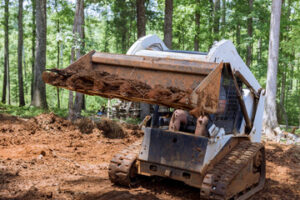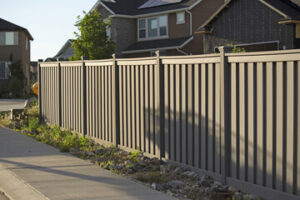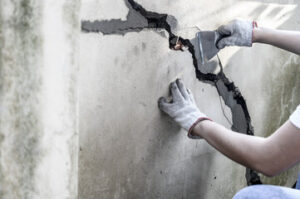Air duct cleaning removes harmful contaminants like bacteria, dust, mildew, pet dander and mold spores from HVAC system ductwork. These contaminants can cause allergies, asthma and other respiratory illnesses.

A regular duct cleaning schedule will help ensure cleaner air, a more sustainable AC system and lower energy bills. You should get your ducts cleaned every three to five years. Contact AC Duct Cleaning Naples FL for professional help.
Getting your ducts cleaned can be an expensive process. But it is important to consider the benefits of having clean ducts before making your decision. Dirty ducts can increase your energy bills and shorten the lifespan of your HVAC system. In addition, dust and other debris can irritate respiratory conditions such as asthma and bronchitis. Regular air duct cleaning will help to reduce these symptoms and improve overall indoor air quality.
The cost of duct cleaning depends on the size of your home and the number of vents. On average, homeowners can expect to spend between $300 and $500 for a professional cleaning service. The price will depend on whether you are having your vents cleaned individually or as part of a complete cleaning package. The costs may also increase if there is evidence of mold or mildew present in your ducts, as these contaminants require special sanitizing procedures.
If you’re planning on performing your own duct cleaning, it is essential to have the proper equipment and safety gear. This includes eye protection and a dust mask. You’ll also need a vacuum cleaner with a hose and nozzle attachment to reach the hard-to-reach areas of your vents. A screwdriver can be used to remove the vent covers and clean out any dust that has accumulated inside. You should also have some paper towels and a lint-free cleaning cloth handy.
Air ducts are a vital part of the air conditioning system, and they should be cleaned regularly to ensure that the conditioned air is being distributed throughout the house. In most cases, it is easy to tell when it’s time to call a duct cleaning company. The main sign is a stale smell that won’t go away, and this can be caused by tobacco use, paint fumes, cleaning products, pets, and more.
Regular duct cleaning can significantly reduce allergy and asthma symptoms, as well as extend the life of your HVAC system. It is important to find a reputable service provider who offers fair prices and will perform the job effectively. You should also check their credentials and references before hiring them.
Benefits
Allergens, dirt, mold spores and mildew grow in air ducts and circulate throughout your home or office. They can cause respiratory health problems such as sneezing, watery eyes and breathing difficulty. Cleaner ducts help alleviate these problems and improve overall indoor air quality.
During normal household activities, pollutants are created in living spaces and deposited in air ducts, including pet dander, dust, chemicals, and unpleasant odors. Your HVAC system continually recirculates this polluted air, so it is important to have your air ducts cleaned. If left unchecked, these contaminants can aggravate asthma and allergies, especially in people who are already sensitive to them.
In addition to releasing toxins into your air, dirty ducts can damage the integrity of the vents, HVAC system and insulators. These damages can result in higher energy bills and expensive repairs. Regular duct cleaning reduces these costs and prevents the build-up of new contaminants.
Prioritize safety by turning off the HVAC system before beginning the cleaning process. This can be done by switching the unit to “fan only” mode. It is also recommended to wear a mask, heavy duty gloves and eye protection during the entire cleaning process. You will need a new filter, a vacuum cleaner with a hose attachment and a stiff-bristled brush with a long handle, such as one that looks like a toilet brush.
Before the cleaning begins, it is helpful to move furniture and other objects that may block access to the vents and registers. A walk-through with the cleaning technician will provide an opportunity to point out areas of concern and ask for any extra attention needed. This will allow the technician to use specialized tools to remove hard-to-reach buildup and prevent future contaminants from building up in the ductwork.
A professional duct cleaning service should take care to inspect the blower compartment of your furnace before performing any cleaning services. This is where a lot of dust accumulates, and it can be difficult to reach without removing the blower panel. This is a good opportunity to clean the blower fan and motor, too.
Safety
Air ducts act as the lungs of your home, transporting conditioned air to every room. As such, they are a prime breeding ground for allergens and microorganisms that can circulate throughout your home and cause a variety of health problems. These contaminants include mold, bacteria, and fungi. Unclean air ducts also contribute to subpar indoor air quality, intensifying allergy and respiratory issues.
However, homeowners can take several precautions to ensure the safety of their family during the duct cleaning process. For example, they should hire a professional with a valid license and a track record of providing high-quality service. It is also important to check the company’s insurance to ensure they are covered in case of accidents or injuries. Finally, it is advisable to clear away items that may obstruct the air vents to enable the duct cleaning team to access all areas of the system.
Personal protective equipment (PPE) is an integral part of a duct cleaning job. It helps to protect employees from biological hazards, sharp objects, and hazardous materials. Some examples of PPE include safety goggles, a respirator or N-95 mask, and gloves. These materials help to keep the duct cleaners safe from harmful dust and debris that could be disturbed during the cleaning process.
In addition, a qualified duct cleaner will use proper lifting techniques and mechanical aids to prevent musculoskeletal injuries. They will also wear high-quality gloves that are designed to withstand cuts and abrasions, while ensuring dexterity and comfort. Additionally, a properly fitted back harness will distribute the weight of the equipment across the body to reduce the risk of injury or strain.
Besides, it is also crucial to avoid common mistakes that can compromise the effectiveness of the air duct cleaning process. These include turning off the HVAC system, using the wrong vacuum, and forgetting to remove decorative covers from vents. All of these factors can limit the cleaning process’s efficiency and cause dust to reintroduce itself into your cleaned ducts. In addition, a dirty HVAC filter can significantly decrease your system’s efficiency by clogging the blower compartment with dirt and other debris.
DIY vs. Professional
Trying to save money on professional air duct cleaning services by doing it yourself may seem like an appealing idea. However, it’s not as easy as it looks and could lead to damage to your ductwork or HVAC system, which would increase costs in the long run.
Dirty ducts are a breeding ground for allergens, mold, and other contaminants that can affect your indoor air quality and health. Duct cleaning removes these contaminants, improving your home’s indoor air quality and ensuring your HVAC system is operating as efficiently as possible.
A common misconception is that a household vacuum cleaner can effectively clean your ductwork. The truth is that a standard hose may not be powerful enough to reach deep-seated debris or dust, especially in hard-to-reach areas of your vents. Professional duct cleaning uses specialized equipment that greatly outperforms household tools, such as high-powered HEPA vacuums and rotary brushes. These tools allow professionals to provide a deeper, more comprehensive clean that enhances indoor air quality and HVAC system performance.
Leaks in your ductwork can cause your HVAC system to work harder, which can significantly increase your energy bill and shorten its lifespan. Professionals are trained to identify and seal leaks with precision without causing unnecessary damage to your ductwork or the rest of your home.
It’s important to keep in mind that even professional cleaning can leave behind some residual dirt and contaminants. To help prevent the need for a more thorough cleaning, you can take steps to maintain your ductwork between professional inspections and cleanings. These include regularly replacing your HVAC filters, maintaining general home cleanliness, and addressing moisture issues promptly. By following these simple steps, you can reduce the need for frequent duct cleaning and improve your indoor air quality and comfort.



